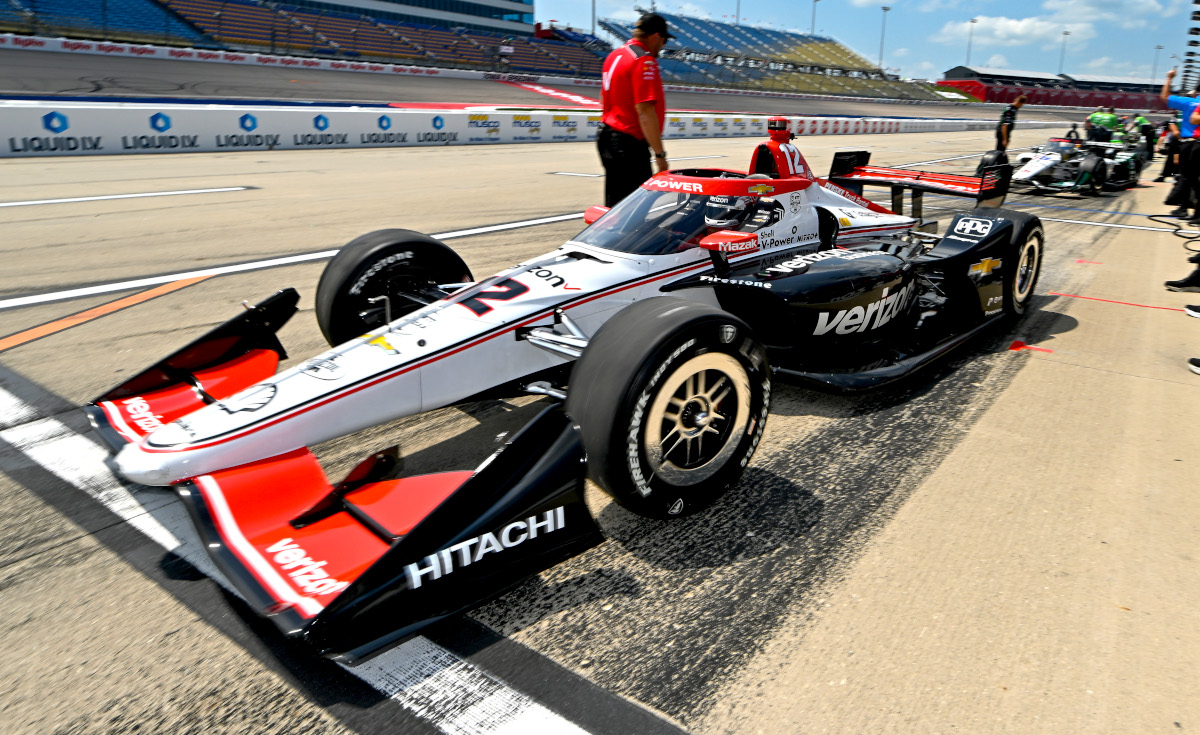Team Penske’s Will Power experienced a right-front tire failure at the recent Iowa Speedway test where a buildup of heat in the hard carcass proved to be a problem on the new high-grip track surface. In reaction to the situation, Firestone brought softer right-side tires for this weekend’s race and IndyCar took 450 pounds of downforce off the cars to reduce the load. After 90 minutes of running at Iowa for the Hy-Vee Doubleheader, no issues were reported.
“They’re quite forgiving. They’re nice tires. I like them,” Power told RACER. “I didn’t think there was any blistering. Taking downforce off helps that. I did 60 laps on one set. Bit of vibration, but I was going just as fast with them on the last lap. Zero deg[redation]; zero passing. It’s just going to be a day of pit stop sequences, in and out, and hoping for a lucky yellow situation.”
Arrow McLaren’s Alexander Rossi shared Power’s views on the tires and in his concern for what kind of racing the Firestone rubber might produce. The hope with the revised tire package was for higher degradation to occur, which would present passing opportunities for those on newer rubber. Alas, high durability was the primary attribute on display during Friday’s practice.
“There’s no deg,” Rossi said. “I think that’s what you would expect with a new surface. I don’t know if any tire is gonna deg. I do think the lighter downforce makes it a little bit more challenging on heavy fuel and behind cars, so the car is moving around more than at the test. But as the fuel comes off, any sort of tire wear you have is for the tire’s life.”
Team Penske’s Scott McLaughlin, who was fastest on Friday, offered a bit of hope on the degradation topic, but also pointed to the new track surface as the main cause of the situation.
“There’s some tire deg,” he said. “Not as much as we’ve seen in the past. I think that’s more track specific than tires.”
